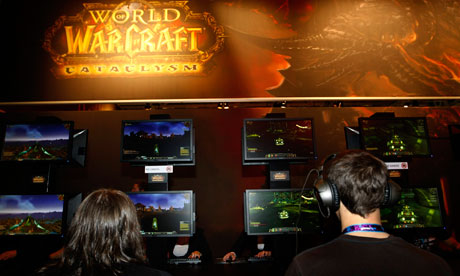
The aftermath of any public killing spree will include tears, candlelit vigils and, if the perpetrator is under the age of 40, a spotlight on video games and the question of whether their shadow falls across the story. At one time, these headlines were generated in the cultural friction that exists between generations. On one hand, the game literate – for whom video games have always been part of the entertainment diet, alongside Blue Peter and Enid Blyton. On the other, the video game illiterate – for whom games are to be mistrusted for their ability to make the implied malice of our playground fantasies explicit.
The media have picked up on this friction, creating indignation and outcry among a majority readership that is predisposed to be anti-video game: "Those video games had a hand in this. I just know it!."
Studies continue to be inconclusive as to whether there is a causal link between violence and consumption of violent media. While the police were only too eager to point to Eric Harris and Dylan Klebold's gaming hobby (Harris created his own levels for Doom, which were widely distributed) in the aftermath of the Columbine massacre 13 years ago, at most, violent games were simply providing an escape for troubled minds.
But when killers cite specific video games as being "training tools" for their killing sprees, as Anders Breivik admitted this week, it becomes more difficult to dismiss the headlines as reader bait. The link between video games and mass murder was made even more quickly in his case due to entries in his "manifesto" diary, in which he mentioned completing the Tolkienesque fantasy role-playing game Dragon Age: Origins, using the online game World of Warcraft to relax, and playing Modern Warfare 2 as part of his "training-simulation".
In context, the quotations were part of a general discussion of pastimes Breivik used to unwind, and crucially, came long after he had formed his initial plan for mass murder. This didn't stop papers such as The Mirror claiming that Modern Warfare 2 allows players to "shoot people on an island", implying a causal link between the game and the killings. When Breivik testified of his fondness for World of Warcraft and his particular understanding of Modern Warfare 2 as a "police shooting simulator", this led to headlines such as The Times' "Breivik played video games for a year to train for deadly attacks."
But it's difficult to imagine World of Warcraft could "train" a person for any acts of violence, other than perhaps suggesting that murdering swamp rats is an effective way to pay for some fur-lined boots. More importantly, for many of its 10 million monthly subscribers, it's an experience that creates community, provides the lonely with a virtual family and promotes teamwork and competition. Modern Warfare 2, while a game thematically more analogous to real-life shooting, is as mainstream as a Michael Bay summer blockbuster, selling more than 10m copies in the US alone. In both cases, as with poker or golf, the games allow humans to play, compete and make social connections. They may improve hand-to-eye co-ordination, and in this sense could be used to "train" one for murder, but no more than an obsession with clay pigeon shooting might.
Most would argue that Breivik's actions were insane. Trying to rationalise the irrational leads to a peculiar type of madness of its own, one that the media have been only too quick to enter into in exchange for page views. But beyond the sensationalism, it's more difficult to explain away the disproportionate focus on violent content, a point that few of video gaming's apologists bring up. Hollywood may share an obsession with bullets and explosions, but cinema's thematic range is more diverse, offering romance, drama and documentary – subjects that games fail to meaningfully address. In part, the juvenile focus is tied to the medium's own adolescence: game designers only now begin to explore away from the baser themes of competition and domination. In part, it's also a technological bias: the barrel of a virtual gun allows players to impact a 3D game world both near and far with the touch of a button, in a way few other of humanity's tools manage.
As game-literate writers rise to editing positions in the mainstream press, this backlash against games will surely fade. Likewise, designers must work to broaden the thematic ambition of their work. But even then, broken humans will no doubt draw whatever inspiration they are seeking from it to feed their own madness. That's one protection no creator can offer their creation.
• Follow Comment is free on Twitter @commentisfree

